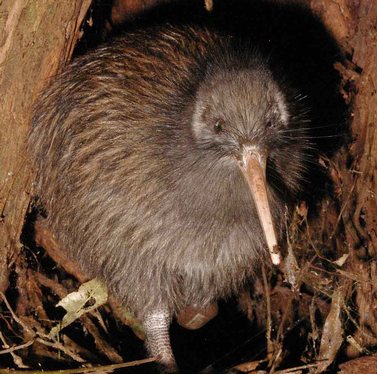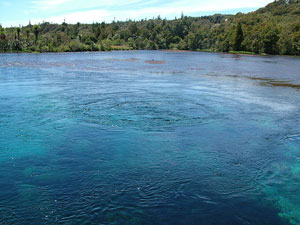
Everyone who watched “Lord of the Rings” knows that New Zealand is a hot spot for nature lovers. After all, in a country where humans only make up 5 percent of the animal population, one really should not expect to see manmade beauty, right? Wrong. There’s a lot more to New Zealand than meets the eye of the typical moviegoer. New Zealand is one of the few places where you can get a good dose of history and wacky culture in the midst of tranquil surroundings. Let’s start with the country’s back-story. (Don’t worry – it may not be sweet, but at least it’s short.)
The very first people to settle in New Zealand were from the Cook Islands, Tahiti, and the Marquesas. In other words, they were Polynesians. Over time, they developed a culture referred to as Maori. The Maori people lived uninterrupted for many centuries, until the Dutch explorer Abel Tasman stumbled ashore in 1642. The Maoris killed four of Abel’s people, and Europeans wisely stayed away for more than a century thereafter.
It wasn’t until James Cook returned to map the coastline in 1796 that the two cultures began to interact, trade, and cohabitate the land – in addition to killing one another, of course. Fast forward to 1832, the British government appointed James Busby as British Resident to New Zealand in reaction to the threat of French-declared sovereignty over the land. To make a long story short, New Zealand did not become French, it became British, and so the potatoes introduced to the country by the settlers that followed Cook were henceforth served as chips rather than French fries. Now then, let’s take a tasteful turn in this one-way conversation, from potatoes to fruit.
 Referred to as kiwis, the nickname for New Zealanders is now in fact official because the Oxford English dictionary defines it accordingly, however, the nickname has nothing to do with the brown, and green fruit, which is not native to the country, it is a reference to the flightless native bird that made a ‘keeee wweeee’ sound. Unfortunately, the bird is now extinct, so you should not expect to hear it if you visit New Zealand.
Referred to as kiwis, the nickname for New Zealanders is now in fact official because the Oxford English dictionary defines it accordingly, however, the nickname has nothing to do with the brown, and green fruit, which is not native to the country, it is a reference to the flightless native bird that made a ‘keeee wweeee’ sound. Unfortunately, the bird is now extinct, so you should not expect to hear it if you visit New Zealand.
However, the New Zealand military identified with the bird and kept its spirit alive by plastering a cartoonish rendition of the kiwi bird on their regimental signs and referring to themselves as the kiwis. In any case, the term kiwi identifies three distinct forms in New Zealand, the humans, fruit, and the now extinct bird.
Besides this often-confusing vernacular, there are many other things to occupy a tourist’s time in New Zealand. Nature activities are an obvious choice, and it’s an especially wonderful place for those who enjoy sea-related activities. In fact, there’s no place like New Zealand if you’re a pirate — though there are numerous activities for the less active tourist, such as gazing at the sea and daydreaming, fishing, and drinking.
For those who simply want to watch the sea, you will be pleased to know that the very farthest land point from the ocean is a mere 128 kilometers. Also, the French Pass (not owned by the French) separates d’Urville Island from the South coast, and there you can see two different levels of the ocean at the same time.
It’s the only place in the world where you can see such a phenomenon. Of course, bird watching and water-gazing are not for everyone — some like to head out in boats for a day of looting and killing, fish that is. Reportedly, anglers find that more rainbow trout weigh in at the two to three kilograms in New Zealand than in all the rest of the world combined.
 Thirsty? Take time to visit Waikoropupu, where 2,100 million liters of fresh water gush up from the cracks in the limestone every day. If that doesn’t quench your thirst, there’s plenty of wine. In 1851, the Roman Catholic Church established the first New Zealand vineyard, the seeds of which have grown and multiplied in keeping with the traditional practices expected of Catholics.
Thirsty? Take time to visit Waikoropupu, where 2,100 million liters of fresh water gush up from the cracks in the limestone every day. If that doesn’t quench your thirst, there’s plenty of wine. In 1851, the Roman Catholic Church established the first New Zealand vineyard, the seeds of which have grown and multiplied in keeping with the traditional practices expected of Catholics.
Vineyards practically cover the country, and the wine produced is arguably among the best in the world.
After days of wading through water and stumbling through vineyards, you may find yourself in a town, which New Zealanders will call a ‘city’ – maybe even a ‘capital.’ Kiwi cities tend to be wonderfully (if sparsely) populated with independent shops, galleries filled with works by talented locals, and more bookstores than you probably expected.
New Zealand has more bookstores per capita than any other country. They also boast more Scottish pipe bands than Scotland itself, so if you took your earplugs out of your bag because you thought you were going to a quiet, peaceful place where the sound of traffic, people, and squawking birds are virtually nil – you may wish to reconsider. Only about 11 percent of the population identifies as being a New Zealander, and cultural diversity involves a lot of loud “culture-sharing,” especially when it involves people with bagpipes. So put your earplugs back in, have fun, and prepare yourself to be surprised at every turn.
The real New Zealand experience is not like the movies.
Sources:
Lonely Planet: http://www.lonelyplanet.com/new-zealand
Wilmshurst, J. M.; Anderson, A. J.; Higham, T. F. G.; Worthy, T. H. (2008). “Dating the late prehistoric dispersal of Polynesians to New Zealand using the commensal Pacific rat.” Proceedings of the National Academy of Sciences 105: 7676 Rutherford, James (April 2009) [originally published in 1966].
”Busby, James” In McLintock, Alexander from An Encyclopedia of New Zealand. Te Ara - the Encyclopedia of New Zealand.
http://www.newzealand.com/travel/media/pressreleases/2011/2/nature_pukah...
